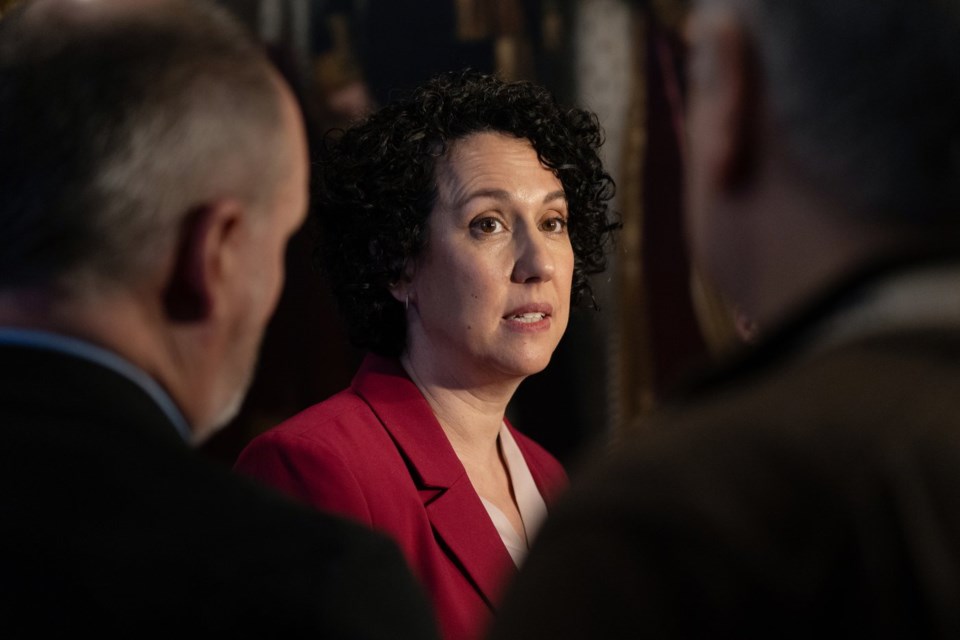HALIFAX — Nova Scotia’s Opposition NDP called on Premier Tim Houston's government Friday to release a report about the province's long history of environmental racism, saying it’s a matter of accountability.
An eight-member panel was expected to submit its report to Houston's government in December 2023.
Justice Minister Becky Druhan, who is also responsible for the Office of Equity and Anti-Racism, did not answer Thursday when pressed by reporters to explain why the government is sitting on the report.
Druhan also wouldn’t answer when asked whether she had seen the panel’s recommendations, saying its work predated her appointment as minister.
NDP Leader Claudia Chender told reporters Friday that Druhan’s evasiveness is part of a “concerning pattern” by a government that is acting as if it’s above accountability.
“People are noticing this government’s aversion to transparency,” said Chender. “Having a majority (government) is not a blank cheque to keep Nova Scotians in the dark.”
As another example, she pointed to the government's failure to publicly disclose it had agreed earlier this year to sign a $170-million federal infrastructure deal.
As for the environmental racism panel, it was appointed in June 2023 to look at how racism affects a community’s natural environment. The idea for the panel came from NDP caucus member Suzy Hansen, who proposed its creation in an amendment to climate change legislation that was passed in the fall of 2023.
Hansen said she was “disappointed and frustrated” to hear that Druhan had refused to provide any information about the panel’s report or its recommendations.
She said the report's release would mean a great deal to the province's Black and indigenous communities.
“This is an opportunity for the government to show that they, in good faith, are going to do the right thing — and they didn’t do any of that by hiding the information," Hansen said.
Examples of environmental racism in Nova Scotia include the toxic dump and landfill that operated for decades near the historic Black communities of Shelburne and Lincolnville.
As well, the cleanup continues at Boat Harbour, N.S., near the Pictou Landing First Nation, where a once pristine body of water served for decades as an effluent lagoon for a now defunct paper mill.
The NDP leader’s news conference came a day after Chender called for more transparency around the government’s push to encourage uranium exploration in three areas of the province with known deposits.
Chender was reacting to comments made by Natural Resources Minister Tory Rusthon, who confirmed Thursday that he has the power under the Minerals Resources Act to compel private property owners to allow mineral exploration on their land. But he said that option has barely been used "over decades.”
“My understanding is, yes, it can be (used), but right now we are encouraging landowners and the researchers to have the conversation, ” said Rushton. “They’d have to prove to me that they’ve had the negotiations … before we’d ever intervene.”
Opponents of uranium exploration, however, have drawn attention to the fact that Rushton used the act earlier this year to allow an Australian company to explore for lithium deposits without the permission of landowners in southwestern Nova Scotia.
“Landowners are very concerned about this,” Chender said Thursday. “I think we need more clarity.”
This report by The Canadian Press was first published May 30, 2025.
Keith Doucette, The Canadian Press




